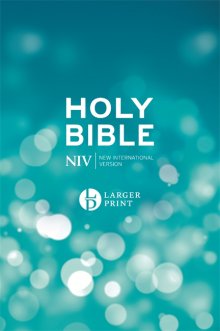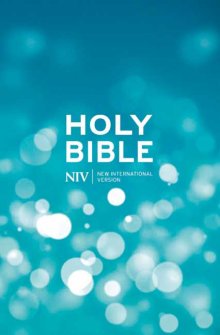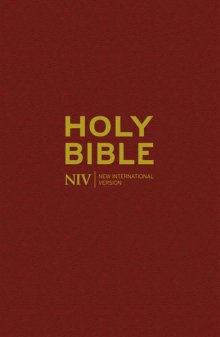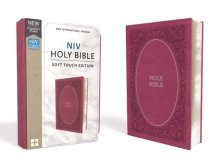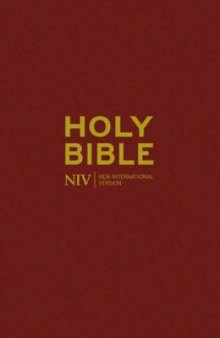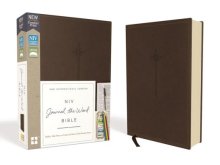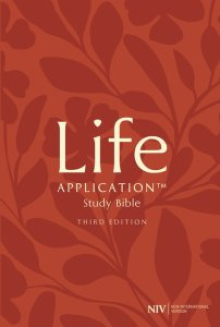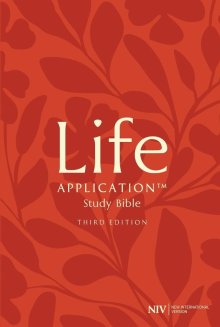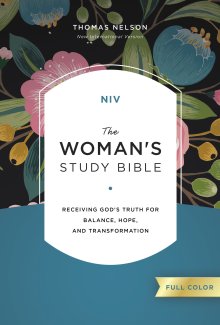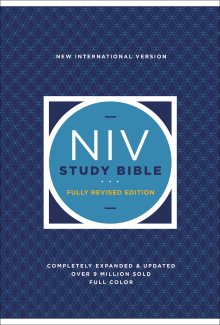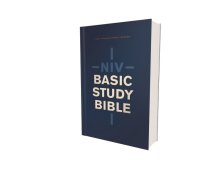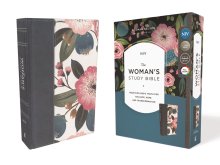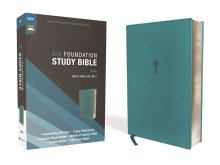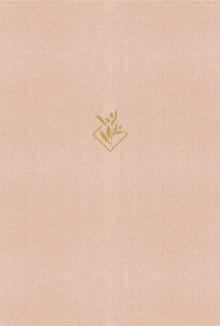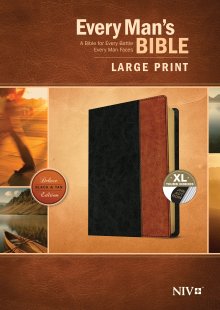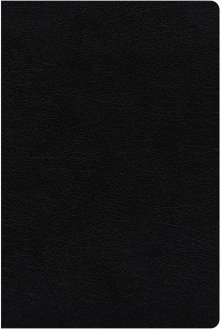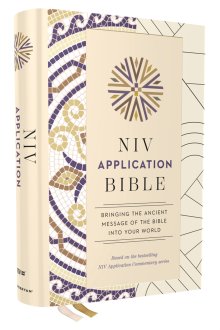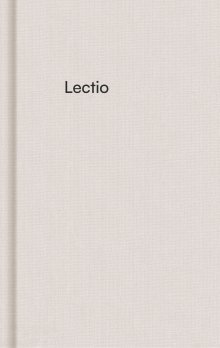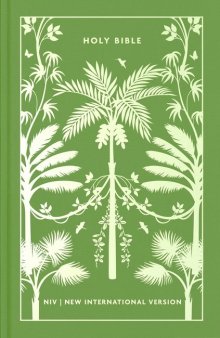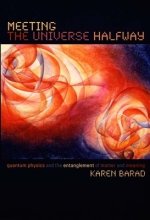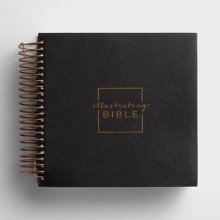What is the New International Version (NIV) Bible?
Aaron Lewendon - Eden Bibles & Bible Study Specialist

Finding the right Bible isn’t easy. There are dozens of translations and hundreds of editions to choose from. Our new series of guides is here to answer your questions about the different Bibles on offer today.
First published in full in 1978, the New International Version (NIV) has become the most widely read modern Bible translation in the world. Its popularity comes from a careful balance, staying faithful to the original text while using clear, accessible language.
There’s a good chance you, or someone you know, has an NIV Bible at home.
It’s made to be read by anyone and understood by everyone.
The History of the NIV Bible
Though the NIV Bible was released in 1978, its story began much earlier, in 1956. That year, a small group formed around a single goal: to create a Bible in the everyday language of the time. The project took shape formally in 1965, when a team of scholars began the translation work in earnest.
The effort was backed by the New York Bible Society, now known as Biblica. After eight years, the NIV New Testament was published. Five years later, the full Bible was complete.
At the heart of this story is Howard Long. An engineer by trade and a passionate Christian by calling, he loved sharing Scripture. But the King James Bible he used often left people confused. The language was formal, the vocabulary complex. What Howard wanted was a Bible that spoke in the language of the people he met.
A Bible they could understand.
A new Bible that removed as many barriers as possible to understanding the heart of scripture.
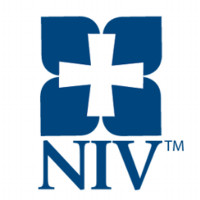
Howard Long made it his mission to see a Bible in plain English, one that working people could grasp, that families could read together, and that pastors could preach from with clarity.
For nearly a decade, he travelled, spoke in churches, and urged others to support the vision. Eventually, his own denomination gave its backing, and a formal committee was formed.
It all began with one man’s frustration: that the heart of Scripture was being lost in language few could understand. Howard believed the Bible should be heard and understood by those who needed it most.
How Was It Translated?
To reach as many people as possible, the new Bible couldn’t belong to just one group. It couldn’t be only a Protestant Bible, or a Lutheran Bible, or tied to any single denomination. It had to speak to the whole Church.
So a broad team was formed, featuring scholars and leaders from across Christian traditions. They didn’t set out to revise an existing Bible. They set out to create a new one. One grounded in the original languages. One shaped by the best available manuscripts.
Experts in Hebrew, Aramaic, and Greek joined theologians, pastors, linguists, and Bible scholars. More than one hundred people worked for over a decade to make the dream of a Bible in modern language a reality.
As the foundation for the new version, the manuscripts used for the NIV included:
- The Dead Sea Scrolls (which featured a number of Old Testament books)
- The Masoretic Hebrew Texts (which are the authoritative Hebrew scriptures, featuring 24 books of the Hebrew Bible)
- The Samaritan Pentateuch (the first five books of the Hebrew Bible), the Latin Vulgate (a 4th century Latin translation of the Bible that was the Catholic Church’s official Bible)
Each manuscript was thoroughly read, translated and brought into modern English. The translation process was long, thoughtful, and in-depth.
How Accurate is the NIV Bible?
The NIV was created for modern readers, especially those who found the King James Bible hard to understand. While it draws from ancient manuscripts, the language is fresh and readable. That raises a key question: how accurate is the NIV?
To answer that, it helps to understand two common terms in Bible translation: word-for-word and thought-for-thought.
Word-for-Word Translations (formal equivalence):
aim to match the original text as closely as possible. They follow the structure and vocabulary of the Hebrew, Aramaic, and Greek manuscripts. But because the Bible comes from a culture far removed from ours, these translations can be harder to read and often require background knowledge.
Thought-for-Thought Translations (dynamic equivalence):
take a different path. They focus on conveying meaning. Translators consider the context and intent behind the original words, then express those ideas in clear, modern language.
Think of it like this:
A word-for-word translation is like Google Translate, literal, but often awkward. A thought-for-thought translation is more like translating a poem, focused on meaning, tone, and readability.
So where does the NIV sit on the translation spectrum?
Right in the middle.
Balance is at the heart of the NIV. From the beginning, the goal was to create a Bible that was both accurate and easy to understand. That meant blending the precision of word-for-word translation with the clarity of thought-for-thought.
This careful balance is a big reason why the NIV remains one of the most popular Bibles worldwide. It stays true to the meaning of Scripture without requiring readers to navigate outdated language or deep historical knowledge. It’s built for real life.
Readable, faithful, and clear.
How easy is the NIV to Read?
The NIV Bible is written at a 7th Grade Reading Level. This means that children from 12 and up should be able to confidently read and understand the majority of the NIV text.
What determines this level is the total number of unique words and sentences, as well as sentence length and the length of the words themselves. Other grammatical features also carry weight in the score. The reading level doesn’t take into account any understanding of history and context. Just the words and grammar of the text.
As an example, this sentence you are currently reading would score a Grade Nine on the readability test.
This sentence would be Grade Two.
Common Uses of the NIV
Because the NIV is so easy to understand, it’s used in churches, chapels, and schools around the world, especially in settings with a wide mix of ages and backgrounds.
Its clear language also makes it easier to translate. One example is the Spanish edition: La Santa Biblia, Nueva Versión Internacional (NVI), which follows the same balance of accuracy and readability.
Beyond public settings, the NIV has long been a favourite for personal study. The NIV Study Bible has been in print since 1985 and remains a go-to resource for deeper reading.
Since its release, nearly half a billion copies of the NIV have been printed—enough for one in four Christians worldwide to own a copy.
Different Editions
Has the NIV Been Updated?
The NIV was designed to use the everyday language of its time, but English doesn’t stand still. In the decades since its release in 1978, both language and biblical scholarship have evolved. To keep pace, the NIV has gone through two major revisions: one in 1985 and another in 2011.
The 1985 update made minor changes based on new insights in translation work.
The 2011 revision was more significant. While 95% of the text remained the same, the update reflected shifts in how English is spoken today. For example, gender-specific words like “mankind” were replaced with more inclusive terms like “people” or “human beings.” Some passages, especially in Paul’s letters, were also clarified based on a deeper understanding of the original Greek.
What Is the NIrV?
One major offshoot of the NIV is the New International Reader’s Version (NIrV). Built on the NIV, it simplifies the language even further and is written at a 3rd-grade reading level. The NIrV is ideal for children, those learning English, or anyone who finds standard Bible translations hard to follow.
Example verses from the NIV Bible
For God so loved the world that he gave his one and only Son, that whoever believes in him shall not perish but have eternal life. - John 3:16
For I know the plans I have for you,” declares the Lord, “plans to prosper you and not to harm you, plans to give you hope and a future. - Jeremiah 29:11
Be kind and compassionate to one another, forgiving each other, just as in Christ God forgave you. - Ephesians 4:32
NIV Bibles You Can Buy Today
Wherever Bibles are sold, you're most likely looking at the 2011 edition of the NIV. But that doesn’t mean all NIV Bibles are the same. You’ve got options—plenty of them.
Here are some of the most popular NIV editions people read and return to again and again:
The NIV New Testament
This low-cost paperback features only the books of the New Testament and has been widely adopted by churches across the UK for outreach.
It begins with the four Gospels, which tell the story of Jesus, his life, teachings, death, and resurrection. For many, it serves as an accessible and reliable introduction to the heart of Christianity. It also helps break down the common idea that the Bible is too overwhelming or difficult to approach.
If you want to give the NIV a try, this is the ideal edition. Buy the NIV New Testament here.
NIV Popular Bible
Presenting simply and clearly the text of the NIV Bible, this hardback edition is used by Churches and Small Groups owing to how easy it is to read and navigate.
You can buy the NIV Popular Bible here.
NIV Life Application Study Bible
Reading the Bible and applying it to daily life can feel like two separate steps. The stories are ancient, the language poetic, but the message is still for today.
That’s the heart of the Life Application Bible. Like the NIV itself, it’s built to make Scripture clear and relevant. Through helpful notes, articles, and practical insights, it bridges the gap between the world of the Bible and the life you’re living now.
It’s one of the most widely used study Bibles worldwide, valued for how naturally it connects God’s Word to everyday faith.
Buy the NIV Life Application Study Bible Here.
NIV Study Bible
Adding a wealth of information about the setting, context, understanding and interpretation of the Bible, the NIV Study Bible has been a trusted resource for anyone with a desire to open up the world of God’s word.
With over 60 contributors providing over 20,000 verse notes, the NIV Study Bible is a comprehensive guide to knowing more of the Bible than ever before.
Frequently Asked Questions About the NIV
People turn to the Bible every day with questions about faith, life, meaning, and what it means to follow Jesus. But just as often, people have questions about the Bible itself—where it came from, how to read it, and what makes one translation different from another.
Here, we answer some of the most common questions people ask about the Bible.
How Many Words Are in the NIV Bible?
According to the web service ‘word counter’, there are 727,969 words in the NIV Bible. This does not include extras, footnotes, and introductions.
How many times is prayer mentioned in the NIV Bible?
According to Biblegateway, the word ‘prayer’ appears 154 times in the NIV Bible.
Do Catholics use the NIV Bible?
No, the NIV is not officially approved for use in Catholic liturgy. Catholic Mass still follows the Latin Vulgate and approved translations based on it. For personal reading and public use within the Catholic Church, translations like the NRSV (Catholic Edition) and the Catholic Good News Bible are more commonly used.
What year was the NIV Bible written?
The first NIV Bible was written between 1956 and 1978. It then underwent two revisions - the first in 1985 and the second in 2011.
Other Bible Translations:
Click on any of the images below to learn all about the stories behind some of the world's most widely-read Bible translations:
Latest Blogs

Bible Verse
Bible Verses About Peace
Read Bible Verses About Peace and discover how the Bible still speaks today.

Bibles
Gen Z and the Rise of Catholic Faith: Bible Trends to Watch
When it comes to church, Gen Z isn’t walking away—they’re walking somewhere unexpected.

Children's bibles
What is a Storybook Bible?
A storybook Bible is a children's book that presents narratives from the Bible in a simplified and engaging manner, tailored for young readers. These books combine vivid storytelling with colorful illustrations to make the teachings of the Bible accessible and captivating for children.

Bible
What is the New International Version (NIV) Bible?
Finding the right Bible isn’t easy. There are dozens of translations and hundreds of editions to choose from. Our new series of guides is here to answer your questions about the different Bibles on offer today.

Bible
What is the New Living Translation (NLT) Bible?
Finding the right Bible isn’t easy. There are dozens of translations and hundreds of editions to choose from. Our new series of guides is here to answer your questions about the different Bibles on offer today.

Biography
Author Interview: Arthur White on Lifting the Darkness and 30 Years of Tough Talk
Authentic interview author and speaker Arthur White, on 30 Years of the ‘Tough Talk’ ministry.


